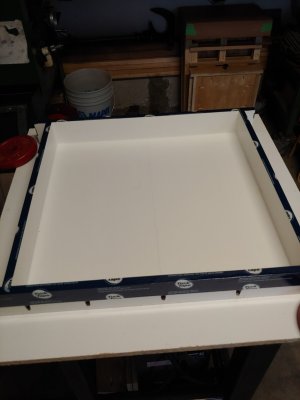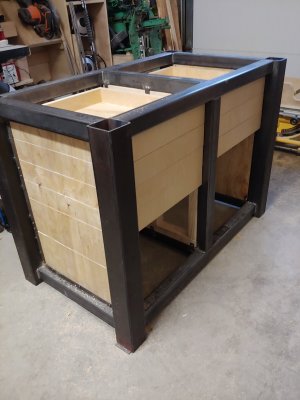WestVinTools
Active Member
Ok. So I'm hoping this will add some rigidity to my newly acquired Craftex cx601 to sit on top of this concrete slab on my workbench. If not, it looks pretty beefy sitting on top of that HSS tubing frame.
I had no intention of doing this until after I bought the mill but I figured it would be a good spot for it, and my granite surface plate on the other side.
Anyone (everyone ) think concrete top base might be overkill or a waste of effort, or no impact at all? It's 22"x22"X3" thick.
I had no intention of doing this until after I bought the mill but I figured it would be a good spot for it, and my granite surface plate on the other side.
Anyone (everyone ) think concrete top base might be overkill or a waste of effort, or no impact at all? It's 22"x22"X3" thick.



